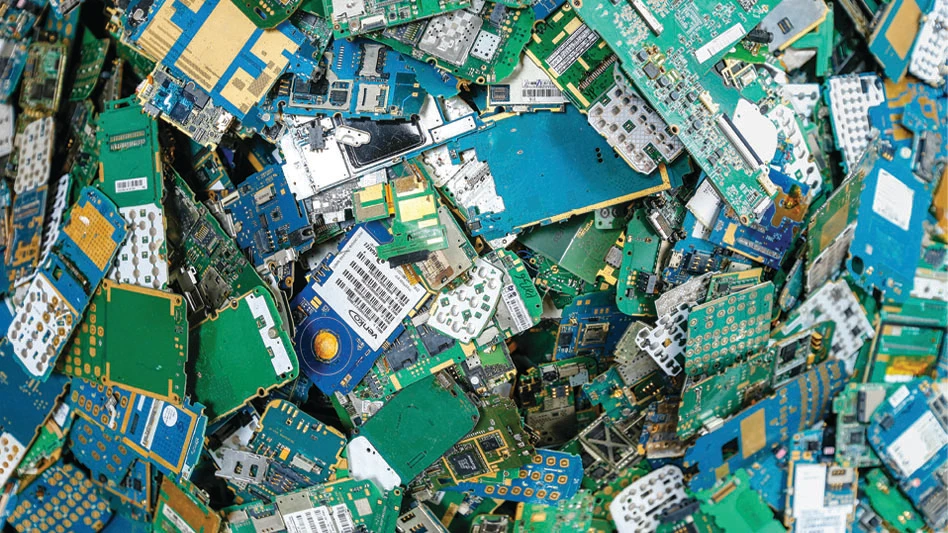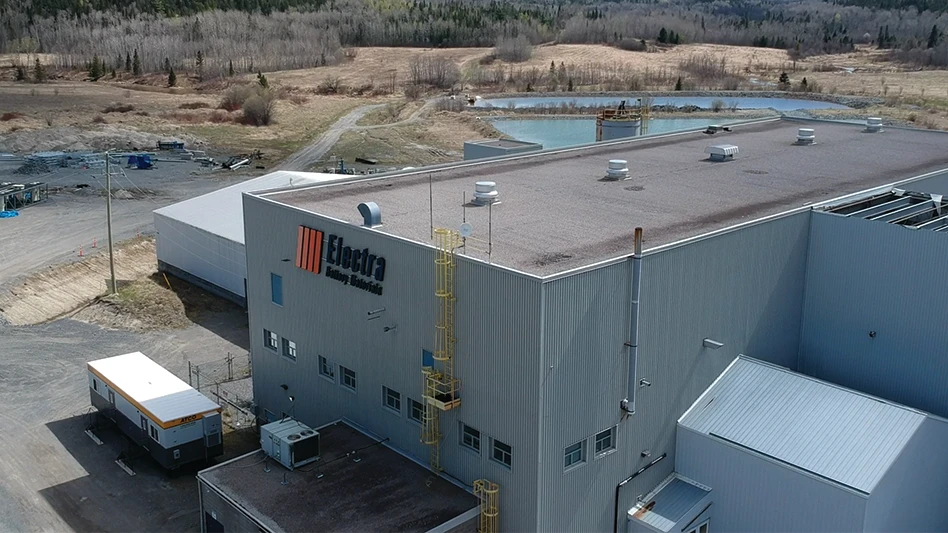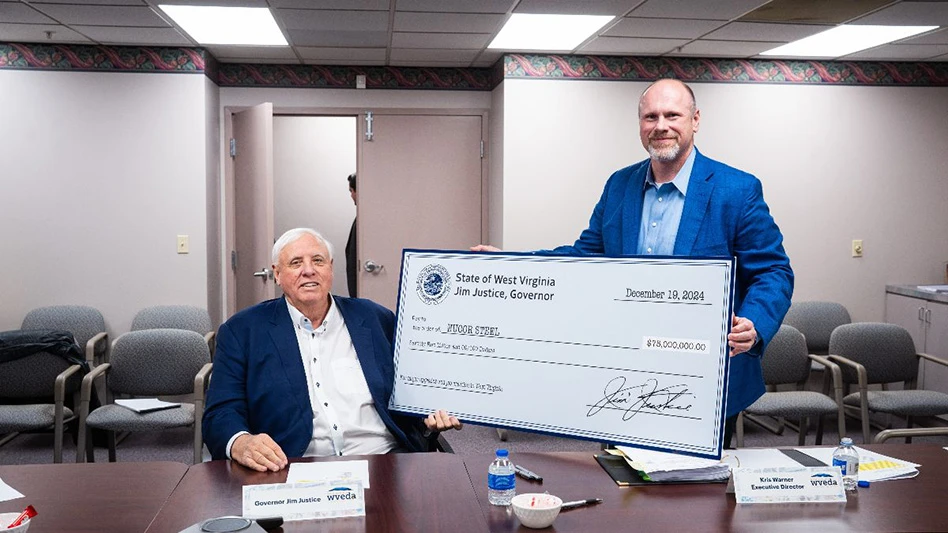After helping create several years of forward momentum and increased participation, curbside recycling advocates have—to some degree—been forced to adopt a more defensive posture recently.
Critics of curbside recycling have emerged with some hard questions for the industry, particularly in regard to its cost-effectiveness for municipal governments. While polls and surveys point to the continuing popularity of recycling as an environmental positive step that can be taken at the individual level, some taxpayers and elected officials want to make sure recycling’s budget numbers make sense for their cities.
A LOUD DEBATE IN PRINT
"Clearly, the most common question regarding municipal recycling we field is: Is it cost-effective," says Pat Holland of the Cuyahoga County (Ohio) Planning Commission, Cleveland. "The fallout from the New York Times piece keeps popping up."
The piece Holland refers to, authored by John Tierney, was entitled "Recycling is Garbage," and originally appeared in the June 30, 1996 New York Times Sunday Magazine. That commentary—and another entitled "Why Recycling is Garbage" by Dan Seligman that appeared in Forbes magazine in November 1997—has stirred a lively point-counterpoint debate on the merits of recycling.
Many recycling advocates have criticized Tierney’s reliance on a handful of conservative think tanks as his sources as a weakness of his commentary. As pro-environmental groups associated with left-wing causes lined up to take shots at Tierney’s article, the debate took on a predictable left vs. right tone. Among the contentions in the point-counterpoint debate:
•New York City’s mandatory recycling program spends $200 more per ton to collect recyclables than it would cost to bury them, and another $40 per ton to pay a company to process them. (Doug Bandow, Cato Institute, Washington)
•Numerous cities have calculated that their per-ton recycling costs are lower than their per-ton garbage collection and disposal costs, and not just in times of peaks in recycling markets. (Richard A. Denison and John F. Ruston, Environmental Defense Fund, Washington)
•Economic waste associated with mandated recycling probably runs into the tens of billions of dollars. (Dan Seligman in Forbes, citing the Cato Institute’s Jerry Taylor.)
•The increased availability of recovered resources has created thousands of new jobs and businesses. This is a hundred times more jobs than the number of jobs supported by the land-filling of these resources. (Richard V. Anthony, founding board member of the California Resource Recovery Association and the National Recycling Coalition.)
As with all political and economic issues where money and influence can be gained or lost through policy decisions, both sides of the debate continue to fund studies that, not surprisingly, support their own views.
PROGRAM REVIEWS BECOMING MORE COMMON
Whether it is a direct result of the mass media debate over recycling or not, North American communities large and small are certainly reviewing and auditing their recycling programs.
"City governments as a whole have become much more aware of the costs of recycling," says Holland. "I don’t think their—or the public’s—commitment has lessened any. But I think we’ve been in the business long enough and are beginning to mature a little bit so that practitioners are beginning to ask if there are better ways to go about this," he adds.
1997 certainly witnessed "an increased amount of scrutiny in terms of municipal recycling programs," says Robert Craggs, director of environmental services at the Central States Office of R.W. Beck, Inc., Minneapolis.
"In the present context, being able to pay for curbside collection and processing is the biggest challenge [facing some municipal programs]. It has to do with priorities," notes Craggs. "Government priorities fluctuate."
Many programs, says Craggs, may have been put in place with the unrealistic expectation that the sale of collected materials would pay for the programs. When taxpayers discovered that was not necessarily the case, many were quick to ask for changes. "As a result, most local governments have been put in a position to make their programs more cost-efficient," says Craggs.
Craggs believes elected officials and administrators need to manage their programs more closely and must be willing to make changes in the collection, processing and marketing of recyclables. "What I see is changes in programs," says Craggs, citing examples such as cutbacks in pick-ups from weekly to every two weeks, or canceling the collection of commodities with floundering prices.
Craig Barry, executive director of the Carolina Recycling Association, Raleigh, N.C., has witnessed programs in North and South Carolina communities cut their pick-up schedules from twice weekly to once weekly.
How recyclables are collected is another potential source of fine-tuning. "Collection vehicles are more and more moving toward the commingled model," remarkes Louis W. Perez, vice president of marketing, Norton Environmental, Independence, Ohio. Norton designs and operates MRFs and operates landfills.
"We have seen a lot of changes in the way programs are being evaulated," adds Perez. "Some of the more advanced MRF designs can handle commericial loads. That opens up possibilities for more fiber recovery opportunities."
IS THE END MARKET WHAT MATTERS?
Barry, Craggs and others are also seeing more attention paid to the commodities being picked up and processed, with communities more willing to make changes for market-based reasons. "We’re seeing programs expanding to cover additional materials such as white ledger paper, cardboard, and textiles," says Barry.
In the Cleveland area, Holland sees a role for community or regional planning in the process of matching commodities with their end markets. "One of the things we are looking at is attempting to tie some of these commodities directly into a manufacturing process here locally," he remarks.
"If I’ve got to ship, say, baled PET one or two states over, is there enough profit? Recently, the answer is no," says Holland. "It can be very difficult to cover your costs by putting materials into a general commodities market. You’ve got to ‘close-loop,’ if you will, at every opportunity, especially with the lower-value commodities."
Holland continues, "Communities very quickly jumped into the collection business, but didn’t necessarily match it to what their nearby processing facilities offered. You need to match those two things, otherwise, you’re feeding oranges into an apple coring machine."
PARTICIPATION STILL THE KEY?
While much has been written about the importance of commodity end markets, some municipal recyclers still see high participation rates as the key to cost-effectiveness.
"We have met the challenge of providing curbside programs," says Robin Ingenthron, strategic recycling planner, State of Massachusetts. "The cost of those programs, we now see very clearly, depends much more on diversion and participation rates instead of end markets."
As an example, Ingenthron cites two neighborhoods in Boston with different haulers and widely different participation rates. Brighton, with the higher participation rate, pays $55 per ton to collect and process its recyclables while East Boston is paying $350 per ton because it is burning truck fuel and paying employees while picking up far fewer recyclables to process.
"These are the exact same commodities going to the same MRF, and paying the same fixed costs of a driver and a truck—but one has much more to pick up," says Ingenthron. "Should the city of Boston ever match the participation rate of the city of Worcester, Boston would save $2 million within its solid waste budget. But at current participation rates, they’re losing money compared to disposal. Participation is really very important to making recycling cost-effective," he states.
Says North Carolina’s Barry, "the way I look at it is, you can’t do anything about the market prices. Those are controlled globally. But you can do something about the participation rate. I think there’s a lot you can do in your community to bolster participation."
In Barry’s case, he says this is a challenge with North and South Carolina’s rapidly-growing cities. "These are some large communities here that, in my opinion, don’t have good participation rates. With growing cities with a lot of new residents, you need to take steps to bring those people up to speed."
Consultant Craggs seems to also suggest that municipal recyclers should continue to focus their attention on participation rates, since it is something they can address. "Many people in the recycling industry focus on the markets, the markets, the markets and how they’re not adequate. But I think how we can provide services in a more cost-effective manner will be stressed more in 1998. Local governments need to be aware that there are different ways to go about recycling."
TIP FEES AND BIDS ALSO PART OF THE PUZZLE
In addition to end market prices and participation rates, the costs of collecting, hauling and processing what is picked up at the curbside remain as factors in the recycling vs. land-filling debate.
"On the processing side, it has become pretty clear that while some materials can turn a profit, it is for the most part extremely difficult to make a profit or break even given the large swings of commodity prices," says Holland.
"There are processing facilities—both private and public—that have been operating with sustained losses," he adds.
On the hauling side, the emergence of the USA Waste management team as the leaders of the newly-expanded Waste Management Inc. raises questions of whether national waste haulers will continue to participate in the recycling industry (see sidebar, pg. 132).
Should national hauling firms back away from the processing of recyclables in particular, an emerging set of regional companies appears to be ready to step into the void.
As Ben Harvey of E.L Harvey & Sons, Westboro, Mass., tells RT for this month’s cover story, "We feel as a family that there is a place for a strong, independently-run company such as E.L. Harvey. It’s difficult to compete with large companies. [But] we’re industry-educated and have grown up in the business. We’ve worked hard over several decades and are not afraid to take a chance or risk on spending say $500,000 to $1 million on a baling system and finding the ‘food’ to feed it."
The emergence and growth of such companies—and perhaps an eventual consolidation process—may be where tomorrow’s recycling industry giants come from, rather than from the ranks of waste hauling.
Perez of Norton Environmental sees similar opportunities for his own firm. "Some of the major waste companies, their primary business is hauling and landfilling. There is a reduction in MRF interest from a lot of these major companies," says Perez. "I think what it does is leave more market oppor-tunities for companies that specialize in the recycling area to work with certain communities."
"There is still a lot of interest in recycling from the public sector," Perez continues, "and commercial recycling is still a viable option in many cases."
R.W. Beck consultant Craggs sees the same trend from his vantage point. "I see other companies are showing an interest in providing the services once more commonly offered by the haulers. We’re seeing a whole new set of vendors emerging," he remarks.
"In short, not all companies are running away and hiding from recycling. There are opportunities and there are companies taking advantage of those opportunities."
A STICK TO GO WITH THE CARROT
Many recycling efforts arose from a public demand. It was a service offered by governments to please their constitutuents--more of a carrot in the old carrot vs. the stick analogy.
In some cases—especially in areas where tipping fees are high and recycling is most viable—communities are adding a stick to go along with the carrot in the form of unit-based pricing or "pay as you throw" programs (see sidebar).
Under a unit-based pricing plan, home owners pay a per-container fee for each bag or can of solid waste left at curbside or dropped off at the local landfill.
Perez cautions that for such programs to work, they must have widespread public support. "I think it works for some communites, but not all. I think it has to have a healthy amount of community awareness and support to work. If you have to shove it down a community’s throat, some less scrupulous citizens will find alternative methods of disposing of their material," Perez says in reference to the potential for illegal dumping activities.
And finally, elected officials being pressured to cost-justify curbside recycling programs may have a difficult time doing so in parts of the country where solid waste tipping fees are low.
North Carolina tip fees average in the $30 range, according to Barry. "That’s still pretty cheap," he notes. "But I think the trend toward increasing tip fees is real. We have a couple of pretty major municipal landfills that will be closing due to compliance with the EPA order regarding un-lined landfills."
Keeping the recycling option is important, says Perez. "Certainly the initial push for recycling from ten years ago has slacked off some, but it’s still a very viable option for a lot of communities. If landfilling is the only option available in a community, there is a good chance that community will see long-term price increases," he remarks.
Those lobbying against recycling from a taxpayer accountability standpoint will argue from varying positions of strength depending on local tip fees. Many recycling advocates hope—and believe—that most members of the public look at more than just budgetary line items when forming their views on recycling.
"The public sees recycling as a resource management issue," writes Richard V. Anthony. "In some cities, the public has voted to pay for the opportunity to recycle discarded resources. Most of us who recycle think we can at least diminish our impact on the planet by putting back some of what we have used. The people have the right to shift the national debate about the future of recycling from a waste management paradigm to a zero waste paradigm."
The author is managing editor of Recycling Today.
Sidebar
WILL WASTE HAULING DEAL AFFECT CURB SERVICE?
When it was announced that the management team of USA Waste Services Inc., Houston, would become the operational leaders of a newly-merged Waste Management Inc., some observers must have seen it as a blow to curbside recycling.
USA Waste has grown and operated with impressively profitable results over the last few years while its primary competitors—Waste Management Inc., Oak Brook, Ill. and Browning-Ferris Industries (BFI), Houston—have experienced quarter after quarter of disappointing results.
How has USA Waste done it? Most analysts agree that one of the keys has been USA Waste’s decision to minimize its participation in the municipal recycling segment. In fact, USA Waste CEO John E. Drury, a former BFI executive, has said he foresaw BFI’s entry into recycling as a source of future problems.
According to Drury, BFI chairman and CEO William Ruckelshaus "thought the future of disposal would be recycling. I was always opposing it. I wouldn’t accept it," Drury told the Wall Street Journal.
Four years after departing from BFI, Drury accepted the chairmanship of USA Waste and helped guide the waste hauler and land-fill operator into its emergence as a highly profitable company with $2.6 billion in annual revenues. Now, if the merger is approved, Drury will head a company called Waste Management Inc. that will be based in Houston and will generate more than $9.1 billion in annual revenues—about twice those of BFI.
Will the emergence of a pre-eminent hauler with a lack of interest in recycling hamper the curbside collection operations of municipal recyclers? Most of those contacted say that it could indeed be a source of additional pressure on municipal programs. "We’re now seeing that waste companies are not using the processing of recyclables as loss leaders to get other business," says Pat Holland of the Cuyahoga County (Ohio) Planning Commission. "They’re not going to eat that loss."
Holland cites responses to a recent bid put out by the City of Cleveland for the processing of its recyclables as an indicator of where the industry could be headed. According to Holland, USA Waste’s proposal asked for over $20 more per ton to process the recyclables versus competing bids from BFI and a regional processor.
Will BFI continue to bid low on such projects if the bottom-line results do not pan out?
Whether the answer is yes or no, many recycling industry participants believe municipal material processing will shift toward smaller regional companies specializing in the processing of curbside commodities.
—Brian Taylor
Sidebar II
PAY-AS-YOU-THROW: A SOLID TIE-IN
How can a municipal recycling authority increase its curbside participation rate? One method may have more to do with garbage pick-up than the recycling bin.
What the EPA has termed "pay as you throw" garbage collection fees (another term used is unit-based pricing) has become a common method of controlling residential solid waste generation. In these programs, residents of a given solid waste district pay a fee for each bag of garbage they leave curbside or—in the case of some rural districts—haul to their local landfill.
"Unit based pricing has been the most successful participation measure, but also the most difficult to sell," says Robin Ingenthron, strategic recycling planner with the State of Massachusetts.
"I hope more pay-as-you-throw programs get implemented. They have the most impact on recovery rates and recycling participation," agrees Craig Berry of the Carolina Recycling Association, Raleigh, N.C. "There’s nothing like an economic incentive to get people to participate."
The per-bag prices charged need not be especially punishing to be effective, Ingenthron believes. "When these programs are in place, people tend to conserve their 50-cent bags," he remarks. "In Milton, Mass., the stickers to put out trash cost $1.25, but the first 60 are free—which actually covers a decent percentage of their trash. They see the value of the sticker, though, and it makes them think twice about using them."
And what doesn’t go into the garbage will, hopefully, go into the recycling bin and make the collection process worthwhile for the community, they contend.—Brian Taylor

Explore the May 1998 Issue
Check out more from this issue and find your next story to read.
Latest from Recycling Today
- Reconomy brands receive platinum ratings from EcoVadis
- Sortera Technologies ‘owning and operating’ aluminum sorting solutions
- IDTechEx sees electric-powered construction equipment growth
- Global steel output recedes in November
- Fitch Ratings sees reasons for steel optimism in 2025
- P+PB adds new board members
- BlueScope, BHP & Rio Tinto select site for electric smelting furnace pilot plant
- Magnomer joins Canada Plastics Pact





